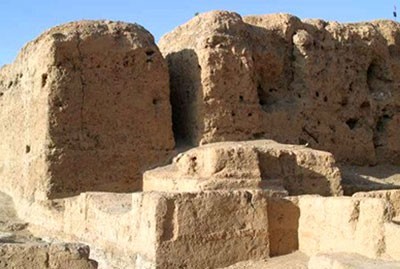
Every hill in al-Hasaka narrates a story about the cultural and archeological heritage and its richness in the findings which proves the importance of the area throughout history.
The archeological findings unearthed by the national and foreign archeological expeditions working in al-Jazeera since the mid 19th century indicate that the first settlement phase of man in the area dates back to the 8th millennium BC.
Several villages and gatherings were discovered in the area dating back to the eras of Hassouna, Samarra and Halaf which was named after Tal Halaf in Hasaka Province.
The human and cultural existence reached the peak in the area during the establishment of the kingdoms and cities of deep-rooted civilizations such as the Akkadian, Babylonian, Hittite and Aramaic civilizations ending by the different Islamic ages.

Chairman of Hasaka Antiquities Department, Abdul-Maseh Baghdou, said that al-Jazeera area in Syria have played a significant role in the cultural progress based on the importance of its geographical location as it constitutes a juncture at the Ancient Near East due to its location between the Mesopotamia and Taurus Mountains to the north of Syria and the Mediterranean Sea.
Al-Jazeera is mainly situated between the Tigris and Khabour Rivers and their small tributaries which widely spread in the area, and on which several civilizations dating back to prehistoric eras were established.
Baghdou indicated that the cities of al-Jazeera area have become an important trade hub during the Arab Islamic civilization in the second half of the 13th century AD, but these cities suffered from the Mongolian invasion as they were destroyed at the hands of Timorlank's armies in the 15th century AD.
Most of the cities were also neglected during the Ottoman Reign while life returned to them at the beginning of the 20th century AD.

He indicated that the archeological findings unearthed at the hills, where the national and foreign expeditions work, constitute a simple part of the treasures in Hasaka Province which requires intensifying work to increase the number of the discovered hills and to introduce the world to Syria's deep-rooted cultural heritage.
Tal Barak is one of the most important hills in Hasaka where the palace of the Akkadian King Naram-Sin was unearthed as it was built above al-Oyoun Temple.
Tal Ghowiran was also discovered on the right bank of Khabour River to the south of the city center. It dates back to the Modern Stone Age and the Bronze Age.
Another important hill is Tal al-Fkhera in which a basalt-made statue was unearthed representing Assyrian King, Adad-it'i /Hadd-yi'thi/, who ruled in the period between the end of the 9th century BC and the 8th century BC.
Tal Halaf is one of the important hills in Hasaka inside which two archeological levels were unearthed including walls dating back to the Byzantine era.
Source: SANA [June 25, 2011]